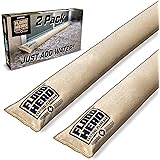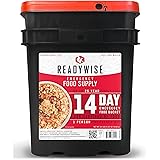Assessing Your Needs and Risks
Understanding Your Environment
First things first, you gotta take a good look at where you live. Each area has its own set of potential disasters—think hurricanes, floods, or wildfires. I remember when I moved to a coastal town, I learned pretty quickly that I needed to get hurricane preparedness tips under my belt.
Ask yourself what your biggest risks are. Is it flooding from heavy rains? Or maybe your region is famous for earthquakes? Figure it out by checking local reports and the experiences of neighbors. The more you know, the better prepared you’ll be.
Once I really understood what I might face, I felt a lot less anxious about it all. That knowledge gave me a starting point to create a solid plan without breaking the bank.
Prioritizing Your Needs
So, you’ve nailed down the risks. What now? It’s time to prioritize. You need to decide what you absolutely can’t live without in an emergency. I would suggest making a list that focuses on essentials like food, water, medication, and any important documents.
It’s also wise to consider things that provide comfort or support. A cherished family photo, for example, could be priceless in a stressful time. Think of what’s irreplaceable to you and make sure those items are tucked away safely.
This process is not just about physical items but also includes planning for your emotional well-being. Having a clear list can help ease your mind when you start stocking up on supplies.
Create a Risk Management Plan
Having a plan is crucial, folks. Write down what actions you’ll take in different scenarios. This doesn’t have to be a huge document—just a simple outline you can reference. I created a basic roadmap that outlines what to do if a storm hits or an earthquake shakes things up.
Make sure you involve your family or housemates in creating this plan. Discuss meeting spots, how to communicate, and who’s responsible for what. It really helps everyone feel included and less stressed when the time comes to act.
== > What if ... Get a FREE Subscription to PREPARE
Your plan should also include check-ins and practice drills. Sounds nerdy, I know, but I did it myself, and it was surprisingly fun! Just a little practice can make a world of difference when the real thing happens.
Building Your Emergency Supply Kit
Food and Water Supply
Now comes the fun part—getting your emergency supply kit together! Start with water; ideally, you want about a gallon per person per day. I used a few big water jugs and made sure to refill them regularly. Helps me stay hydrated even now!
Next, think non-perishable food. Canned goods are fabulous, but don’t forget about dry snacks like granola bars or nuts. I’ve stored away boxes of these little goodies—easy to grab and easy to eat. Also, make sure to avoid items that require cooking unless you’ve got a camping stove or something.
When stocking up, pay attention to expiration dates. Rotate your food every six months or so—it’s like a mini scavenger hunt in your kitchen!
First Aid and Personal Care Items
Okay, let’s talk first aid! I quickly put together a simple first-aid kit—band-aids, antiseptic wipes, pain relievers, and any necessary prescription medications. Trust me, it’s worth the time to create a compact little box of healing supplies.
Also, don’t forget about personal care items. Stock up on toiletries like toothbrushes, toilet paper, and sanitary products. I even threw in some fun stuff like wipes and hand sanitizer. You’ll be thanking yourself later for those little touches.
Remember to re-check your first aid kit and personal care items every so often. No one wants to find expired meds in a crisis!
Communication and Documentation
Your next step is all about staying in the loop and keeping your important stuff safe. Start by creating a communication plan with your family. I’ve set up a group chat for my household. It’s our go-to for sharing updates or if we suddenly can’t find each other!
Also, have copies of essential documents—like IDs, insurance papers, and health records—stored both physically and digitally. I keep a USB drive loaded with scanned copies stashed in my emergency kit and also saved on a cloud service.
Make sure to have a portable charger or backup battery for your devices, too. If the power goes out, I still want to keep my phone alive as long as possible!
Staying Informed and Engaged
Follow Local Agencies and News
Stay connected with local news and emergency services. Follow your local emergency management agencies on social media. They provide real-time updates and tips. I’ve found a great Facebook group that shares information during emergencies. It’s like a community support system!
Also, consider downloading an app that offers alerts specifically for disasters in your area. I love having instant notifications on my phone, so I’m always in the know when things go south.
Additionally, don’t shy away from engaging with your neighbors. A solid community can be invaluable in times of disaster, so share info, stay connected, and form a little support circle nearby.
Practice Makes Perfect
This part is crucial, and I can’t emphasize it enough: practice your plan! We do regular drills at home, just so we’re familiar with what to do in a hurry. Even a simple simulation can help reinforce what’s needed, should something go down.
When we face an emergency scenario, everyone jumps right in. It’s like muscle memory at this point! I’ve learned so much about my family’s strengths and weaknesses when it comes to these drills.
Make it a family affair! The more you practice, the more confident you’ll feel. Plus, it’s an excellent chance to bond and share some laughs amid the serious stuff.
Financial Preparedness
Lastly, let’s talk money. Preparing for a disaster doesn’t have to clean out your wallet. Look for sales and discounts and stock up on emergency items when you can. I’ve saved a good chunk just by being savvy with shopping.
Another idea is to create a small emergency fund. Even just a little saved up can make a world of difference in a disaster. I set aside a few extra bucks each week, and it really adds up over time.
Also, consider talking to your insurance provider about your coverage. It’s important to know if you’re adequately protected, especially in cases of massive natural disasters. It’s worth knowing before you find yourself in a tough spot.
Frequently Asked Questions
What should I include in my emergency supply kit?
Your emergency supply kit should include water, non-perishable food, first aid supplies, necessary medications, personal care items, and a way to communicate and document information.
How often should I check my emergency supplies?
It’s a good idea to check your emergency supplies every six months to a year to ensure that food and medications have not expired.
What’s a reasonable budget for preparing for disasters?
The budget can vary widely based on personal needs, but starting with a few essentials and gradually building your supplies over time can be an effective approach. Aim for around $50 to $100 to begin with, and expand as feasible.
How can I stay informed about local disasters?
Follow your local emergency management agencies on social media, subscribe to local news alerts, and download disaster-related apps for real-time updates.
Is practicing my emergency plan really necessary?
Yes! Practicing helps everyone know what to do and reduces panic in a real emergency. It can save lives and make the process smoother when things go awry.






